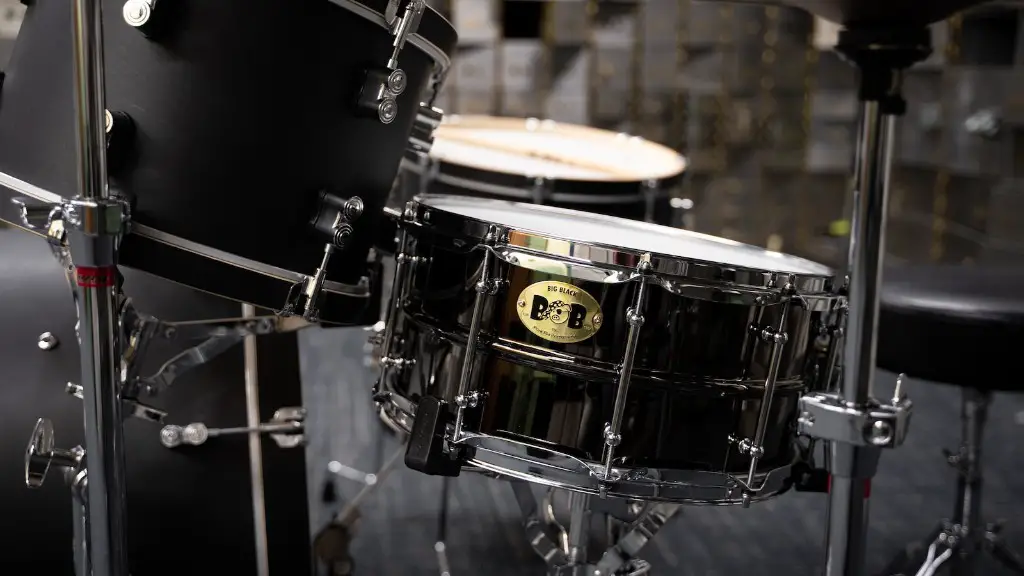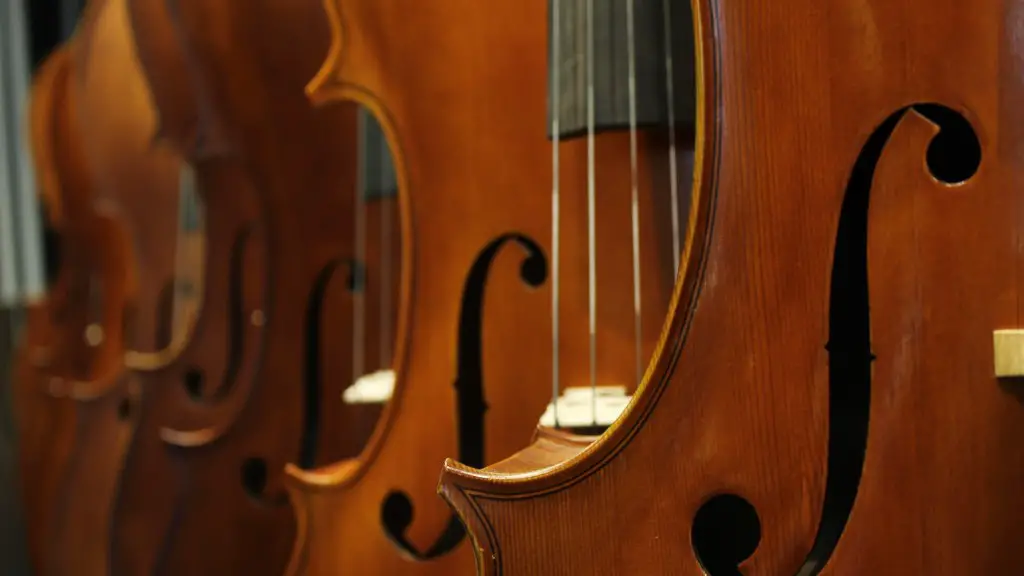Playing drums is an exciting and rewarding experience that can be enjoyed by people of all ages. It is also a great way to express yourself musically. To get started, you will need a drum set, which typically includes a bass drum, snare drum, tom-toms, hi-hat cymbals, and crash cymbals. You will also need a practice pad and sticks.
Once you have your equipment ready, it’s time to start learning the basics of drumming. Start by learning basic rhythms and beats on the practice pad. Once you are comfortable with these rhythms, you can move on to playing them on the drum set. Pay close attention to your posture and hand/foot placement when playing the drums to ensure accuracy.
To become more familiar with the drums and their capabilities, it is important to practice regularly. Listen to different styles of music and try to imitate what you hear in your own playing. This will help you become more comfortable with different genres of music as well as develop your own unique style.
With dedication and practice, anyone can learn how to play drums! So get out there and start enjoying this amazing instrument!
Positioning the Drum Set Correctly
Properly positioning your drum set is essential for achieving the best sound and maximizing your comfort. The first step is to make sure the drum throne (drum seat) is at the right height. You should be able to sit comfortably on it with both feet flat on the ground. Your thighs should be parallel to the floor, and your arms should be able to reach all of the drums and cymbals without any strain.
Next, adjust each of the drums so that they are level with each other and slightly angled towards you. Make sure that all of the drum heads are tight and have a good bounce when hit. Also, check to make sure all of your cymbals are mounted securely, with enough clearance between them for you to play without hitting them together. Finally, position yourself so that you can reach all of your drums and cymbals comfortably while playing.
Positioning your drum set correctly can take some time and experimenting, but it’s worth it! With a properly positioned kit you’ll sound better, play more efficiently, and be more comfortable while doing it. Don’t forget that practice makes perfect – so keep playing!
Learn the Basics of Drum Notation
Drum notation is a system used to communicate how to play drums. It is important to learn and understand drum notation in order to become a great drummer. Drum notation can be written on sheet music or in tablature form. In sheet music, individual notes are written on a staff and indicate which drum should be played and for how long. In tablature, the notes are represented by numbers that correspond to specific drums or cymbals.
In addition to knowing which drum to play, drum notation also communicates other important information such as dynamics, accents and note duration. Dynamics indicate how loud or soft a note should be played while accents indicate that a note should be emphasized compared to the surrounding notes. Note duration is indicated by flags and beams attached to each note which indicates how long the note should be held for.
Reading drum notation takes practice and patience, but with enough dedication it can be mastered. It is helpful to practice reading drum notation with a metronome so you can get comfortable with playing at different tempos. There are also many resources online such as books, videos, and websites where you can learn more about reading and writing drum notation. With enough practice you will soon become an expert at reading and writing drum notation!
Practice Basic Drum Beats
Learning to play drums can be a great way to express yourself musically and have fun. It’s important to start with the basics and practice regularly in order to become skilled at playing the drums. Here are some tips for practicing basic drum beats:
Start Slow: Start off by playing the basic beats at a slow pace. This will help you get familiar with the rhythms and give you time to adjust your technique if needed. As you become more comfortable, gradually increase the speed.
Play Along With Music: Find songs that you like and try playing along with them. This will help you develop your sense of timing and keep your practice sessions interesting. You can even make up your own drum patterns as you listen to the music.
Focus On Technique: Pay attention to how you’re striking the drums and how each part of your body is moving in relation to each other. Check that your grip is correct and that your movements are fluid and consistent.
Record Yourself:
Recording yourself as you practice is a great way to evaluate your progress and identify areas for improvement. It will also help you remember any new techniques or rhythms that you learn so that you can continue practicing them.
By practicing regularly, focusing on technique, playing along with music, recording yourself, and starting slow, it won’t be long before you’re able
Playing Drums with Independent Hands and Feet
Playing drums is a great way to express yourself and let out your energy. To get the most out of your drumming experience, you need to learn how to move your hands and feet independently. This allows you to keep up with more complex rhythms and play freely.
To start, make sure that your drum kit is correctly set up for your height and posture. The positioning of the pedals and drums should be comfortable for you, so that it’s easy to move each limb independently. Practice slowly at first, so that you can familiarize yourself with the motions.
It’s important to remember that playing with independent hands and feet means that both limbs are doing something at all times. To get this coordination down, practice playing a simple rhythm pattern on the snare drum while keeping a steady beat using the bass drum pedal. As you get more comfortable, increase the speed of your limbs until you are able to keep up with more complex rhythms.
You should also practice different sticking patterns with both hands and feet. This will help develop your independence, while also allowing you to explore new rhythms and sounds on the drums. Once you have mastered playing with independent hands and feet, there are no limits to what kind of music you can create.
Improve Your Hand and Foot Technique (How To Play Drums)
Drumming is an art form that requires a great deal of coordination between your hands and feet. The basics of drumming involve hitting the drums with your sticks, using your feet on the bass drum and hi-hat, and using your hands to hit the cymbals. To become a better drummer, it’s important to practice and develop your hand and foot technique.
Start by practicing basic rhythms with just your hands. This will help you build up strength and control in both hands. Practice different rhythms with different drumsticks to get used to them. Then move on to playing more complex rhythms with both hands at once. Work on hitting the cymbals in time with the rhythm you’re playing.
Once you’re comfortable playing complex rhythms with both hands, start adding in your feet as well. Practice striking the bass drum in time with the hand drums, or use it to create a more intricate beat pattern. Incorporate footwork into your playing by working on different combinations of hi-hat patterns, kick drum patterns, and hand drum patterns.
Finally, work on developing speed and accuracy with both hands and feet together. Start out slowly with simple patterns and then gradually increase speed over time until you can play at a faster tempo without sacrificing accuracy or control. With regular practice, you’ll be able to master any kind of hand or foot technique that comes your way!
Learn Advanced Rhythms and Fills for Drummers
Are you looking to take your drumming skills to the next level? Mastering advanced rhythms and fills can make a huge difference in your playing. With the right practice and dedication, you can become a highly skilled drummer in no time. Start by learning basic rhythms, then work your way up to complex patterns. It’s important to develop an understanding of rhythm theory, as this will help you understand how different rhythms interact with each other.
Once you have a good grasp of rhythm theory, it’s time to start practicing advanced rhythms. Start by playing along with a metronome or drum machine, then gradually increase the tempo until you’re comfortable playing at faster speeds. Take your time and focus on developing accuracy and speed. As you gain more experience, you can incorporate more syncopation into your playing.
It’s also important to learn how to integrate fills into your playing. Fills are used to add interest and excitement to a song, so it’s important that they flow seamlessly from one part of the song to the next. Experiment with different types of fills and practice combining them with different rhythms. This will help create interesting transitions between sections of a song and give your playing an extra layer of complexity.
Finally, don’t forget about dynamics! Playing drums is all about creating dynamics – alternating between loud and soft sections – so make sure that you practice dynamic control when playing advanced rhythms or fills. With practice, patience,
Conclusion
Playing drums can be a fun and rewarding experience. It requires practice, dedication, and patience to become a great drummer. With the right techniques, you can learn how to play drums quickly and easily. Whether you’re playing for fun or for a career, the basics of playing drums remain the same. To become a good drummer, you need to practice regularly and develop your own unique style. Once you have mastered the basics of drumming, you can move on to more advanced techniques and musical styles. With dedication and hard work, anyone can learn how to play drums!





